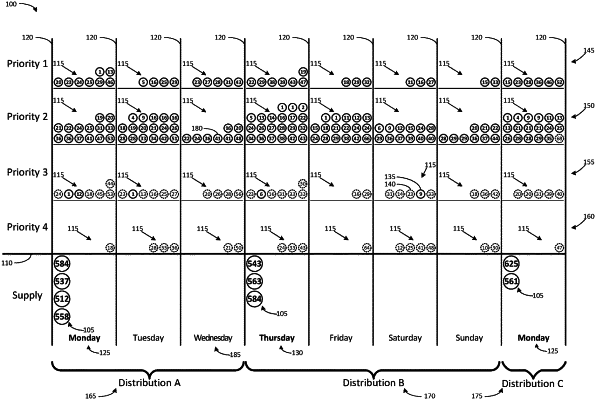| CPC G06Q 10/06315 (2013.01) [G06F 7/08 (2013.01); G06Q 10/04 (2013.01); G06Q 10/06312 (2013.01); G06Q 10/06316 (2013.01); G06Q 10/0875 (2013.01); G06Q 10/10 (2013.01); G06F 3/0482 (2013.01)] | 20 Claims |

|
1. A computer implemented method, comprising:
automatically arranging a graphical representation of a schedule of supplies and met and unmet demands for a series of days in a graphical user interface;
accepting a user input through the graphical user interface to cause the schedule of supplies and met and unmet demands for the series of days to be regenerated;
identifying a set of one or more distributions within the series of days;
sorting all demands of a first priority level occurring in the series of days by ascending order of size of the demand;
for the demands of the first priority level in sorted order, selecting an initial distribution during which the demand is scheduled to be fulfilled from the set of distributions,
for the demands of the first priority level in sorted order, generating, by a processor, (i) an indication that one of the demands can be completely fulfilled, and (ii) an indication that another of the demands cannot be fulfilled and is to be left entirely unmet, based on sizes of the demands and amount of supply available for assignment in the initial distribution and all previous distributions preceding the initial distribution; and
automatically rearranging the graphical representation of the schedule of supplies and met and unmet demands for the series of days in the graphical user interface based at least on the indications generated for each demand.
|